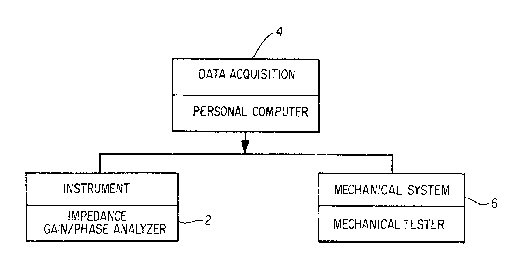Some of the information on this Web page has been provided by external sources. The Government of Canada is not responsible for the accuracy, reliability or currency of the information supplied by external sources. Users wishing to rely upon this information should consult directly with the source of the information. Content provided by external sources is not subject to official languages, privacy and accessibility requirements.
Any discrepancies in the text and image of the Claims and Abstract are due to differing posting times. Text of the Claims and Abstract are posted:
| (12) Patent Application: | (11) CA 2084277 |
|---|---|
| (54) English Title: | METHOD AND APPARATUS FOR DETERMINATION OF MATERIAL RESIDUAL STRESS |
| (54) French Title: | METHODE ET APPAREIL POUR DETERMINER LA CONTRAINTE REMANENTE D'UN MATERIAU |
| Status: | Deemed Abandoned and Beyond the Period of Reinstatement - Pending Response to Notice of Disregarded Communication |
| (51) International Patent Classification (IPC): |
|
|---|---|
| (72) Inventors : |
|
| (73) Owners : |
|
| (71) Applicants : |
|
| (74) Agent: | MARKS & CLERK |
| (74) Associate agent: | |
| (45) Issued: | |
| (22) Filed Date: | 1992-12-01 |
| (41) Open to Public Inspection: | 1993-06-03 |
| Availability of licence: | N/A |
| Dedicated to the Public: | N/A |
| (25) Language of filing: | English |
| Patent Cooperation Treaty (PCT): | No |
|---|
| (30) Application Priority Data: | ||||||
|---|---|---|---|---|---|---|
|
ABSTRACT OF THE DISCLOSURE
A device for the determination of residual stress
in a material sample consisting of a sensor coil, adjacent
the material sample, whose resistance varies according to
the amount of stress within the material sample, a
mechanical push-pull machine for imparting a gradually
increasing compressional and tensional force on the
material sample, and an impedance gain/phase analyzer and
PC for sending an input signal to and receiving an input
signal from the sensor coil. The PC will measure and
record the change in resistance of the sensor coil and the
corresponding amount of strain of the sample. The PC will
then determine from the measurements of change of
resistance and corresponding strain of the sample the
point at which the resistance of the sensor coil is at a
minimum and the corresponding value and type of strain of
the sample at that minimum resistance point thereby
enabling a calculation of the residual stress in the
sample.
Note: Claims are shown in the official language in which they were submitted.
Note: Descriptions are shown in the official language in which they were submitted.

2024-08-01:As part of the Next Generation Patents (NGP) transition, the Canadian Patents Database (CPD) now contains a more detailed Event History, which replicates the Event Log of our new back-office solution.
Please note that "Inactive:" events refers to events no longer in use in our new back-office solution.
For a clearer understanding of the status of the application/patent presented on this page, the site Disclaimer , as well as the definitions for Patent , Event History , Maintenance Fee and Payment History should be consulted.
| Description | Date |
|---|---|
| Inactive: IPC from MCD | 2006-03-11 |
| Inactive: IPC from MCD | 2006-03-11 |
| Time Limit for Reversal Expired | 1995-06-01 |
| Application Not Reinstated by Deadline | 1995-06-01 |
| Deemed Abandoned - Failure to Respond to Maintenance Fee Notice | 1994-12-01 |
| Inactive: Adhoc Request Documented | 1994-12-01 |
| Application Published (Open to Public Inspection) | 1993-06-03 |
| Abandonment Date | Reason | Reinstatement Date |
|---|---|---|
| 1994-12-01 |
Note: Records showing the ownership history in alphabetical order.
| Current Owners on Record |
|---|
| THE GOVERNMENT OF THE UNITED STATES AS REPRESENTED BY THE ADMINISTRATOR |
| Past Owners on Record |
|---|
| ENGMIN J. CHERN |
| YURY FLOM |